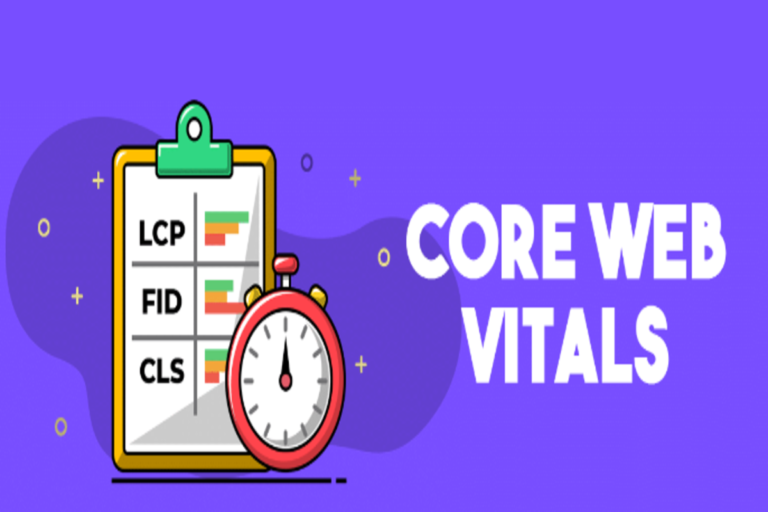In the realm of web performance, user experience has taken center stage. With the growing emphasis on delivering seamless and efficient online experiences, Google has introduced Core Web Vitals as essential metrics for assessing website performance. One crucial metric among them is the Interaction to Next Paint (INP). In this blog post, we will delve into the world of INP, understand its significance as a Core Web Vital, explore how to improve it, and address whether a poor INP can be detrimental to your website.
What are the Core Web Vitals?
Core Web Vitals (CWV) are a set of specific metrics that Google employs to quantify the user experience of websites. These metrics focus on various aspects of web performance, such as loading, interactivity, and visual stability. Core Web Vitals provide insights into how users perceive the speed, responsiveness, and stability of a website, ultimately influencing search engine rankings.
What is INP?
Interaction to Next Paint (INP) is a core web vital metric that gauges the time it takes for a web page to respond to a user’s interaction. This interaction could be anything from clicking a button to scrolling. INP measures the delay between the user’s action and the resulting visual response on the page. It is divided into two categories:
- First Input Delay (FID): FID measures the time it takes for a user’s first interaction with the page to be acknowledged by the browser. It indicates how responsive the page is to user-initiated actions.
- Largest Contentful Paint (LCP): While LCP is primarily associated with loading performance, it also contributes to INP. LCP measures the time it takes for the largest content element on the page to become visible.
What is a Good INP?
A good INP is a low INP. In other words, a shorter delay between user interaction and visual response signifies better user experience. For First Input Delay (FID), an ideal value is less than 100 milliseconds. This means that when a user interacts with your page, the browser should respond within 100 milliseconds. As for Largest Contentful Paint (LCP), an optimal value is under 2.5 seconds. Achieving these values indicates that your website is highly responsive and offers a seamless experience to users.
How Can INP be Improved?
Improving INP involves optimizing various aspects of your website’s performance:
- Reduce JavaScript Execution Time: JavaScript execution can often delay the browser’s response to user interactions. Minimize the use of heavy JavaScript libraries and consider code splitting to only load essential scripts initially.
- Optimize Images and Videos: Large media files can contribute to slow loading times and subsequently impact INP. Compress images and videos without compromising quality to enhance loading speed.
- Prioritize Critical Resources: Load essential resources first to ensure that the initial interaction with the page is smooth. Use techniques like lazy loading for non-critical resources to prevent them from affecting interactivity.
- Browser Caching: Leverage browser caching to store certain elements of your website locally on users’ devices. This reduces the need to fetch these elements repeatedly, resulting in faster load times.
- Content Delivery Networks (CDNs): CDNs distribute your website’s content across various servers, allowing users to access it from a server nearest to them. This can significantly improve loading times and responsiveness.
- Minimize Server Response Time: Ensure that your server responds promptly to user requests. Use efficient server-side scripting and database queries to reduce server response time.
- Use Efficient CSS: Complex CSS styling can delay the rendering of a page. Optimize your CSS by removing unused styles and using efficient selectors.
Is a Bad INP Detrimental for My Website?
Yes, a bad INP can negatively impact your website in several ways:
- User Experience: A slow response to user interactions frustrates visitors and diminishes their experience on your site. Users might abandon the page if it doesn’t respond quickly enough.
- Bounce Rate: A high bounce rate, where users leave your site shortly after arriving, can be a consequence of poor interactivity. This can affect your site’s overall engagement and conversions.
- Search Engine Rankings: Core Web Vitals, including INP, are considered by Google in its search ranking algorithm. A poor INP could lead to lower search rankings, reducing the visibility of your website.
- Competitor Advantage: Websites with better interactivity and faster response times have a competitive edge. Users are more likely to prefer and engage with sites that offer a seamless experience.
Conclusion
In conclusion, INP, as a crucial component of Core Web Vitals, plays a significant role in determining the quality of user experience on your website. A good INP indicates responsiveness and interactivity, resulting in enhanced user satisfaction. By optimizing various aspects of your website’s performance, you can improve INP and mitigate its potential negative effects on user engagement, search rankings, and overall success. Remember, in the digital age, a fast and responsive website is no longer just a luxury – it’s a necessity.



